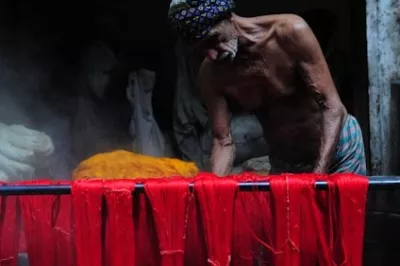Highlights from the CGAP Technology Blog – September 2010
We started out September with a virtual conference on the topic of a new CGAP Focus Note Microfinance & Mobile Banking: The Story So Far. We invited guest bloggers from the MFIs featured in the paper to share their learnings from implementing mobile banking in their daily operations. Here SMEP consultant George Kinyanjui explains how group dynamics have changed with the use of M-PESA:
We knew that allowing groups to repay via M-PESA would impact the group cohesion and we worked carefully to ensure this impact was positive. Although clients repay using M-PESA prior to the group meeting, the meetings themselves are still mandatory. The meetings are much shorter than they used to be since the emphasis is not on collecting cash. Instead, loan officers can focus immediately on any repayment issues or business problems the clients wish to discuss. The officers can now accommodate more groups in one day. Clients are happy since they can make repayments whenever they want, group meetings are shorter and there is more security.
Dan Radcliffe and Ignacio Mas from the Bill & Melinda Gates Foundation finished a paper on Scaling Mobile Money. The paper describes how mobile money systems require scale to get off the ground and struggle to grow incrementally, as they need to reap network effects, build trust, and overcome chicken-and-egg problems of acquiring both customers and merchants simultaneously. Ignacio also shared 4 priorities for branchless banking via our blog:
It takes a considerably bold(er) person to predict how exactly (branchless banking) will happen and by when. Rather than speculate on that, perhaps it is more useful at this point in time to lay out what are the milestones –let’s call it priorities— that those of us who support the development of branchless banking would like to see happen. I’m talking here about outcomes –what kind of offers we’d like to see in the marketplace—rather than constituent elements of the puzzle (such as regulation, agent network management or technology bits).
Karina Baba and other CGAP Technology Team colleagues released the findings from a survey of mobile money managers to understand their expectations around profitability of the mobile money business:
Considering mobile money on its own as a source of revenue, about 70 percent of the managers who responded agree to a certain extent that this service will be a significant source of revenue for MNOs, making large profits over time. A majority of the respondents view mobile money more as a new source of revenue (63 percent) than as a strategy to acquire new customers (50 percent).
Chris Bold wrote about how branchless banking providers in Pakistan are facilitating both the mobilization of donations and the disbursements of cash to those that need it most following the floods:
CGAP’s partner in Pakistan, Tameer Microfinance Bank, and their parent company, Telenor Pakistan, have made it possible for people in Pakistan who may not have internet access to make donations to relief organizations using their EasyPaisa mobile banking platform and have removed the usual transfer fees. EasyPaisa account holders can make donations direct from their mobile wallets and anyone can walk into one of 6,000 agents to contribute to the work of organizations including the Pakistan Red Crescent Society and SOS Children’s villages.
Archil Bakuradze guest blogged for us about enabling international remittances in Georgia. And Mark Pickens closed out the month by writing about mobile money innovation.
Mobile money is mostly one size fits all. Here is your mobile wallet and P2P function – you figure out what you can use it for. What if providers turned this on its head, asked customers why they were using mobile money, and then tailored its features? Saving through your mobile to pay for school fees? Let us send you weekly reminders to help you remember to make a deposit. Would that be terribly expensive for the provider?
- Sarah Rotman




Add new comment